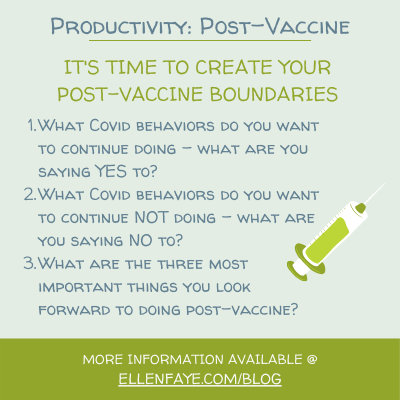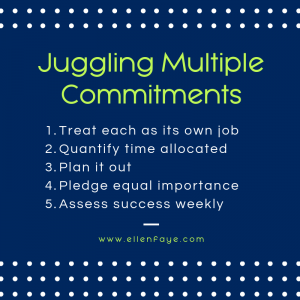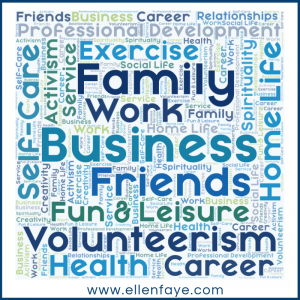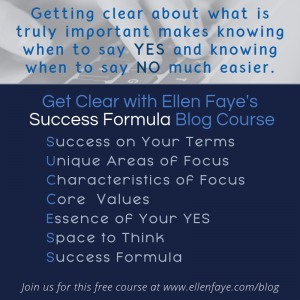05 Apr Productivity: Post-Vaccine
We used to go to work and come home to relax. Now we work from home and soon we’ll be going out to relax. I heard someone say that we really don’t work from home – now we are living from work. That sounds crazy! What is clear however, is that things are different. Dependent on your age and where you live, your access to the vaccine varies. Hopefully we will soon all have our “get out of jail free” (vaccine) cards and be returning to our new normal.
I was on a Zoom call last week and we discussed our anxiety around returning to normalcy. Yes, with this new freedom comes anxiety. We’ve gotten pretty darn comfortable in our yoga pants and bare feet. We’ve built in systems and supports to help us get our work done and live from work. Now there is another shift coming. How do we make this transition as healthfully and productively as possible?
It’s about BOUNDARIES! What you say YES to, and what you say NO to. Building the scaffolding now will support you in reentering in a way that will get what you need, yet not compromise the learning and reevaluating that we’ve had this past year. What supports do you need? What guardrails can you put in place to protect you?
On our Zoom call, my colleague, Susan Lannis of the Time Liberator, posed her questions about our post pandemic behavior, from which I’ve crafted the following questions for you to ask yourself. I suggest you invest the time to journal on this, or open a note or document and write your answers out. Take your time. Give it thought.
- What behaviors, actions, or learnings from the Covid shutdown do you want to continue doing – what are you saying YES to?
- What behaviors, actions, or learnings from the Covid shutdown do you want to continue NOT doing – what are you saying NO to?
- What are the three most important things you look forward to doing post-vaccine?
Now make a list of your boundaries – what you will say yes to, what you will say no to, and what you wish to continue. Here are mine:
- What I want to continue doing – What I’m saying YES to:
- “No incoming tech” Saturdays
- Exercise and yoga classes via Zoom
- Speaking engagements via Zoom
- What I want to not do – What I am saying NO to:
- Going out socially more than 2 or 3 times a week
- Networking when it doesn’t serve me
- Traveling more than once a month
- Three most important things I look forward to getting back to
- Seeing my friends and family
- Going to the store and picking out what I want
- Taking golf lessons
Taking the time to think through and plan will support your success. Good luck as you move through this next transition. Interested in learning more? Here is what is sure to be many articles written about our post-pandemic return.














